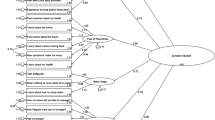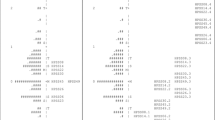Abstract
OBJECTIVE: To determine the proportion of primary care patients who are experienced by their physicians as “difficult,” and to assess the association of difficulty with physical and mental disorders, functional impairment, health care utilization, and satisfaction with medical care.
DESIGN: Survey.
SETTING: Four primary care clinics.
PATIENTS: Six-hundred twenty-seven adult patients.
MEASUREMENTS: Physician perception of difficulty (Difficult Doctor-Patient Relationship Questionnaire), mental disorders and symptoms (Primary Care Evaluation of Mental Disorders, [PRIME-MD]), functional status (Medical Outcomes Study Short-Form Health Survey [SF-20]), utilization of and satisfaction with medical care by patient self-report.
RESULTS: Physicians rated 96 (15%) of their 627 patients as difficult (site range 11–20%). Difficult patients were much more likely than not-difficult patients to have a mental disorder (67% vs 25%, p<.0001). Six psychiatric disorders had particularly strong associations with difficulty: multisomatoform disorder (odds ratio [OR]=12.3, 95% confidence interval [CI]=5.9–25.8), panic disorder (OR=6.9, 95% CI=2.6–18.1), dysthymia (OR=4.2, 95% CI=2.0–8.7), generalized anxiety (OR=3.4, 95% CI=1.7–7.1), major depressive disorder (OR=3.0, 95% CI=1.8–5.3), and probable alcohol abuse or dependence (OR=2.6, 95% CI=1.01–6.7). Compared with not-difficult patients, difficult patients had more functional impairment, higher health care utilization, and lower satisfaction with care, whereas demographic characteristics and physical illnesses were not associated with difficulty. The presence of mental disorders accounted for a substantial proportion of the excess functional impairment and dissatisfaction in difficult patients.
CONCLUSIONS: Difficult patients are prevalent in primary care settings and have more psychiatric disorders, functional impairment, health care utilization, and dissatisfaction with care. Future studies are needed to determine whether improved diagnosis and management of mental disorders in difficult patients could diminish their excess disability, health care costs, and dissatisfaction with medical care, as well as the physicians’ experience of difficulty.
Similar content being viewed by others
References
Groves JE. Taking care of the hateful patient. N Engl J Med. 1978;298:883–7.
Anstett R. The difficult patient and the physician-patient relationship. J Faro Pract. 1980;11:281–6.
Lipsitt DR. Medical and psychological characteristics of “crocks.” Int J Psychiatry Med. 1970;1:15–25.
Drossman DA. The problem patient: evaluation and care of medical patients with psychosocial disturbances. Ann Intern Med. 1978;88:366–72.
Smith RC, Zimny GH. Physician’s emotional reactions to patients. Psychosomatics. 1988;29:392–7.
Merrill JM. Laux L. Thornby JI. Troublesome aspects of the patient-physician relationship: a study of human factors. South Med J. 1987;80:1211–5.
Lin EHB, Katon W, Von Korff M. et al. Frustrating patients: physician and patient perspectives among distressed high users of medical services. J Gen Intern Med. 1991;6:241–6.
Schwenk TL, Marquez JT, Lefever D, Cohen M. Physician and patient determinants of difficult physician-patient relationships. J Fam Pract. 1989;28:59–63.
McGaghie WC, Whitenack DC. A scale for measurement of the problem patient labeling process. J Nerv Ment Dis. 1982;170:598–604.
Novack DH, Landau C. Psychiatric diagnoses in problem patients. Psychosomatics. 1985;26:853–8.
Crutcher JE, Bass JM. The difficult patient and the troubled physician. J Fam Pract. 1980;11:933–8.
Hahn SR, Thompson KS, Stern V, Budner NS, Wills TA. The difficult doctor-patient relationship: somatization, personality and psychopathology. J Clin Epidemiol. 1994;47:647–58.
Spitzer RL, Williams JBW. Kroenke K, et al. Utility of a new procedure for diagnosing mental disorders in primary care: the PRIME- MD 1000 study. JAMA. 1994;272:1749–56.
Stewart AL, Hays RD, Ware JE. The MOS Short-Form General Health Survey: reliability and validity in a patient population. Med Care. 1988;26:724–32.
Stewart AL, Greenfield S, Hays RD, et al. Functional status and well-being of patients with chronic conditions: results from the Medical Outcomes Study. JAMA. 1989;262:907–13.
Wells KB, Stewart A, Hays RD, et al. The functioning and well-being of depressed patients: results from the Medical Outcomes Study. JAMA. 1989;262:914–9.
Woodwell DA. Office visits to internists, 1989. Advance Data. National Center for Health Statistics, No. 209, April 28, 1992.
Rosenblatt RA, Cherkin DC, Schneeweis R, Hart LG. The content of ambulatory medical care in the United States: an interspecialty comparison. N Engl J Med. 1983;309:892–7.
Schulberg HC, Bums BJ. Mental disorders in primary care: epidemiologic, diagnostic and treatment research directions. Gen Hosp Psychiatry. 1988;10:79–87.
Kessler LG, Cleary PD, Burke JD Jr. Psychiatric disorders in primary care: results of a follow-up study. Arch Gen Psychiatry. 1985;42:583–7.
Von Korff M, Shapiro S, Burke JD, et al. Anxiety and depression in a primary care clinic: comparison of Diagnostic Interview Schedule, General Health Questionnaire, and practitioner assessments. Arch Gen Psychiatry. 1984;44:152–6.
Katon W, Schulberg H. Epidemiology of depression in primary care. Gen Hosp Psychiatry. 1992;14:237–47.
Oldham JM. Personality disorders: current perspectives. JAMA. 1994;272:1770–6.
Kaplan G, Lipkin M Jr. Gordon GH. Somatization in primary care: patients with unexplained and vexing medical complaints. J Gen Intern Med. 1988;3:177–90.
Smith GR Jr. Somatization Disorder in the Medical Setting. DHHS Publication No. (ADM) 90-1631. Washington, DC: U.S. Government Printing Office, 1990.
Rost KM. Akins RN. Brown FW, Smith GR. The comorbidity of DSM-1II-R personality disorders in somatization disorders. Gen Hosp Psychiatry. 1992;14:322–6.
Katon W. Kleinman A. Rosne G. Depression and somatization: a review. Am J Med. 1982;72:127–35, 241-7.
Kroenke K, Spitzer RL, Williams JBW. et al. Physical symptoms in primary care: predictors of psychiatric disorders and functional impairment. Arch Fam Med. 1994;3:774–9.
Kellner R. Schneider-Braus K. Distress and attitudes in patients perceived as hypochondriacal by medical staff. Gen Hosp Psychiatry. 1988;10:157–62.
Smith RC. Unrecognized responses and feelings of residents and fellows during interviews with patients. J Med Educ. 1986;61:982–4.
Gorlin R. Zucker HD. Physicians reactions to patients: a key to teaching humanistic medicine. N Engl J Med. 1983;308:1059–63.
Wills TA. Hahn SR. Altruism in medical settings. In Montada L, Bierhoff HW. eds.Altruism in Social Systems. Lewiston, NY: CJ Hogrefe. 1991;204–23.
Zinn WM. Transference phenomena in medical practice: being whom the patient needs. Ann Intern Med. 1990;113:293–8.
Author information
Authors and Affiliations
Additional information
Supported by an unrestricted educational grant from the Roerig and Pratt Pharmaceuticals division of Pfizer Inc.
Rights and permissions
About this article
Cite this article
Hahn, S.R., Kroenke, K., Spitzer, R.L. et al. The difficult patient. J Gen Intern Med 11, 1–8 (1996). https://doi.org/10.1007/BF02603477
Issue Date:
DOI: https://doi.org/10.1007/BF02603477




